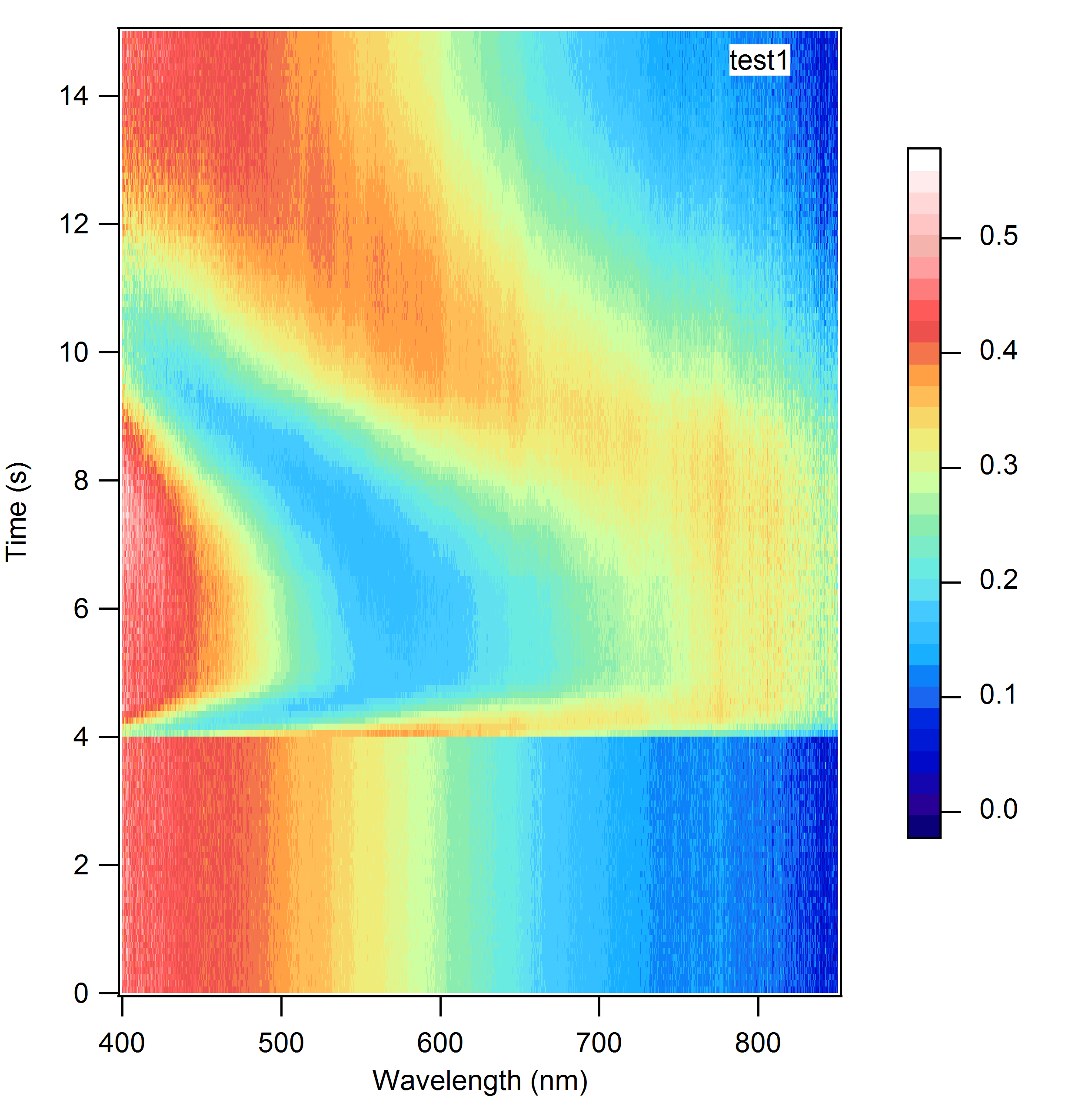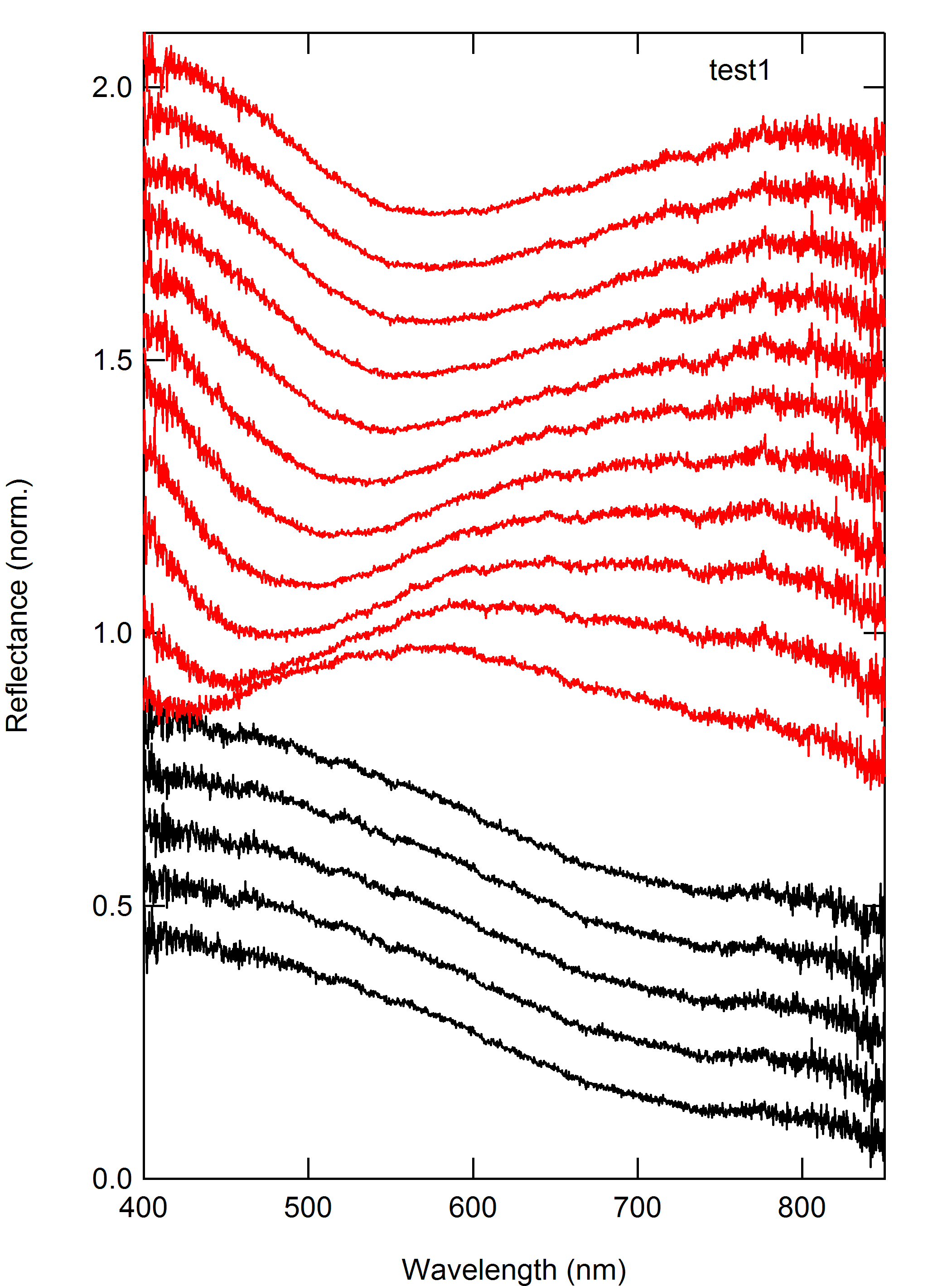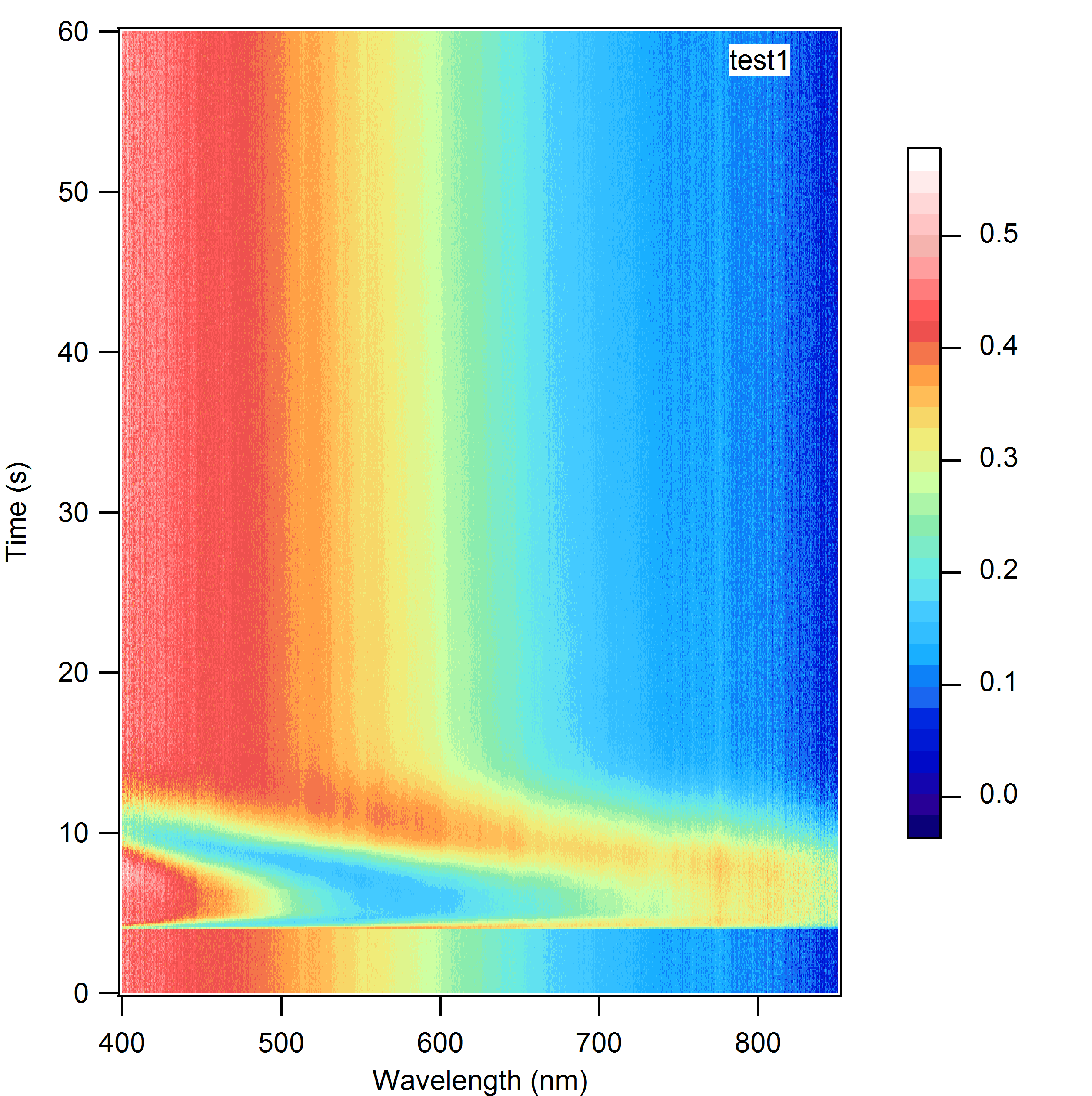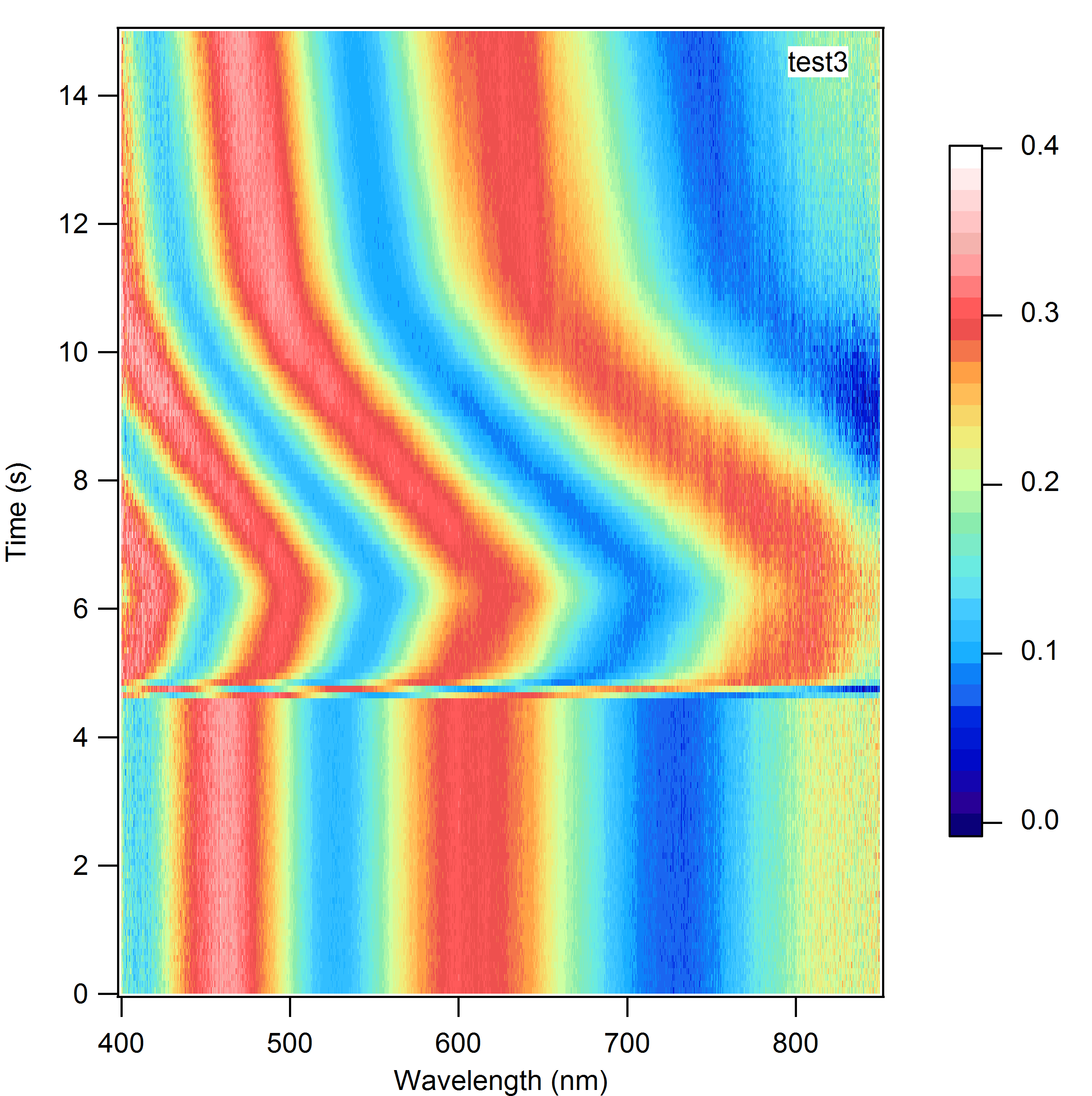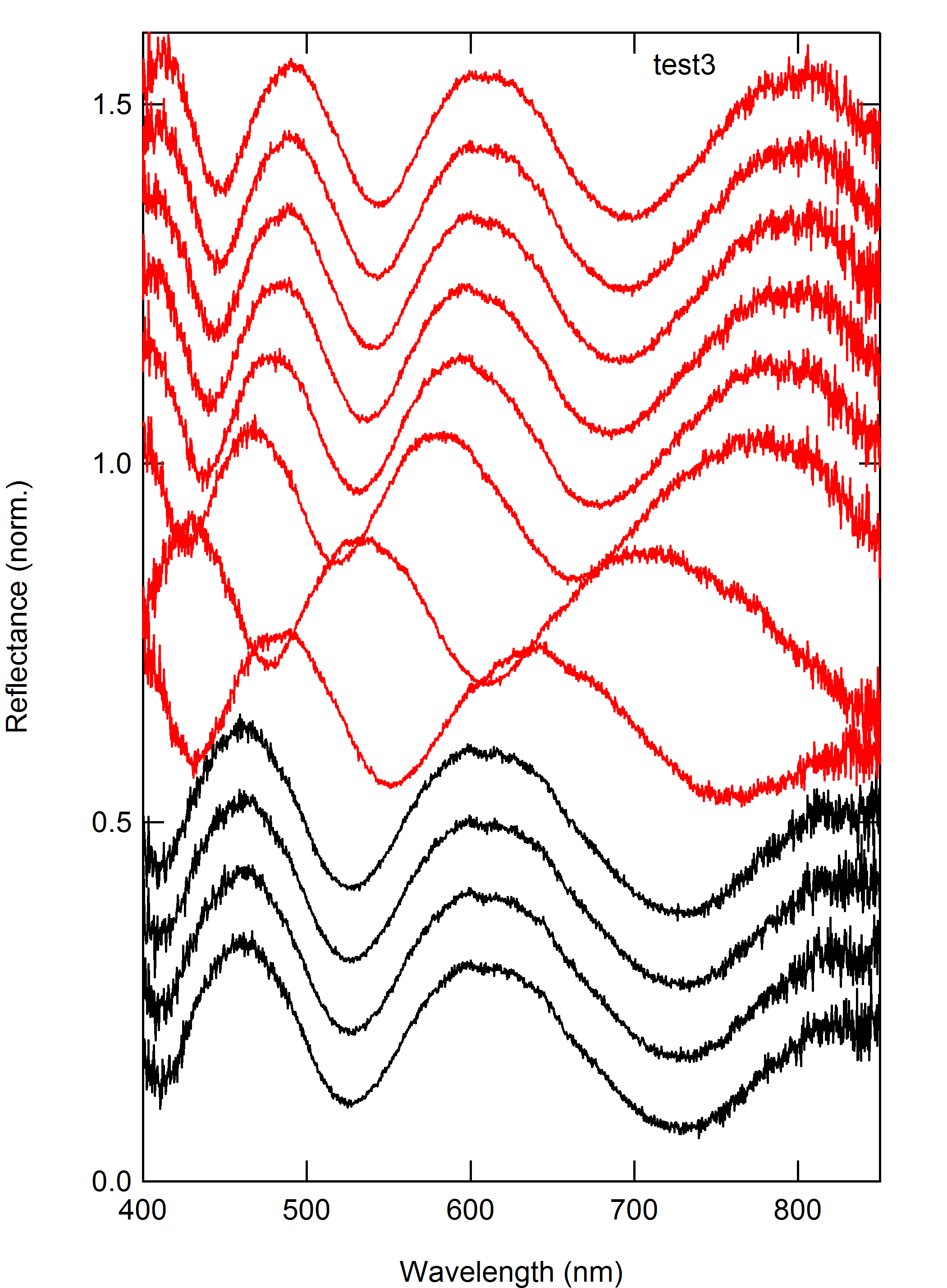Team:Cambridge/Experiments/Reflectin Thin Films VII
From 2011.igem.org
Contents |
Spectral Measurements of Thin Films
With the tris dialyzed samples we recorded spectral data to show that the films being spun were truly 'thin film' and we demonstrated the ability of the thin films to change colour upon breathing by recording video and spectral data when breathed upon under the microscope.
Single Layer Spectra
Looking at this we can see that by breathing we have been able to shift the colour of the film from blue to yellow. The presence of one dominant peak is an indication of the thickness of the film as we are only seeing one constructive interference determined by the dominant peak.
Double Layer Spectra
This spectra was captured from a double layer with first layer PDMS, 2nd layer reflectin. You can see from the photos that this film is much thicker than before with multiple maxima and minima where the maxima indicate constructive interference and minima indicating destructive interference. The major difference between the two layer and three layer films is primarily there is a greater shift in wavelength probably because there is no PDMS layer on top.
The three layer spectra incidently should be more distinguishable however as mentioned with the dialyzed proteins they possessed a tendency to dewet which forms a non-uniform layer onto which the PDMS does not very well leading to a very non-uniform third layer which is also very thin.
Triple Layer Spectra
PDMS Control
Back to Experiments
 "
"

